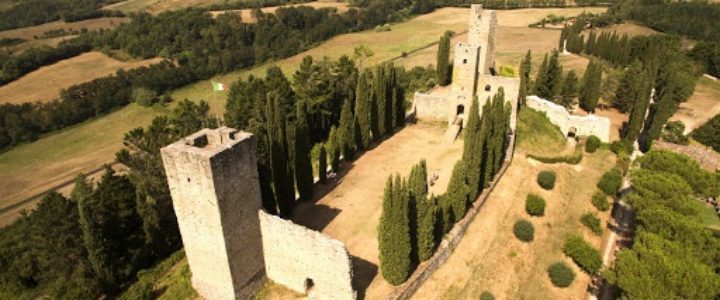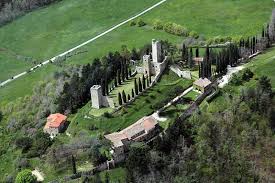
The first evidence of the existence of the fort dates back to 1088 when it was the residence of Count Guido Alberto dei Marchesi di Spoleto, which starting from this fortress succeeded during the eleventh century to extend his dominions over the Casentino. In the twelfth century the manor became the property of the new lords of the valley: the Counts Guidi. At the death of Count Guido Guerra III (1213), the property of the Guidi family was divided among their sons and the castle of Romena passed to Aghinolfo, and from him descend the so-called “Guidi di Romena” counts, a minor branch of the family.
Perhaps the most famous episode in the long history of the castle occurred in 1281. At that time at the castle lived Mastro Adamo da Brescia who, on behalf of the Guidi di Romena, falsified the gold florins of the Republic of Florence. Captured and sentenced to death he was executed near the castle in the locality later called Omomorto; the episode of Mastro Adamo is also reported by Dante Alighieri in song XXX of Hell.
Dante Alighieri himself lived for some time in the castle at the time of his exile from 1301 to his death in 1321. Dante was in good relations with the Counts Guidi who agreed to host and protect him: it must be said for the sake of truth that the great poet resided almost always in the nearby Castle of Porciano. The Guidi family remained the owners of Romena until 1357 when the castle was bought by the municipality of Florence
The entrance to the castle takes place to the north by the so-called Joyful Gate and Kiss Gate. The formwork is accessed by a tower, equipped with a drawbridge and moat, and once inside you can see the two nuclei of the structure: the so-called house of the Podestà, residential palace of the Guidi counts of Romena where inside there is a scale reconstruction of the castle as it appeared in the thirteenth century, and the keep, the highest and most protected tower; There is also a cistern for collecting rainwater and an underground tunnel that led to the outside.
The defensive walls still have some corbels, which have the task of supporting the wooden walkway, a work of restoration of the nineteenth century.
Between the keep and the third surviving tower there is the large space of the square of arms, where in 1901 he put his tent Gabriele d’Annunzio. The last of the towers is the so-called Prison Tower.
Subjected to major restoration was reopened to the public in 2007 and can be visited for a fee.


